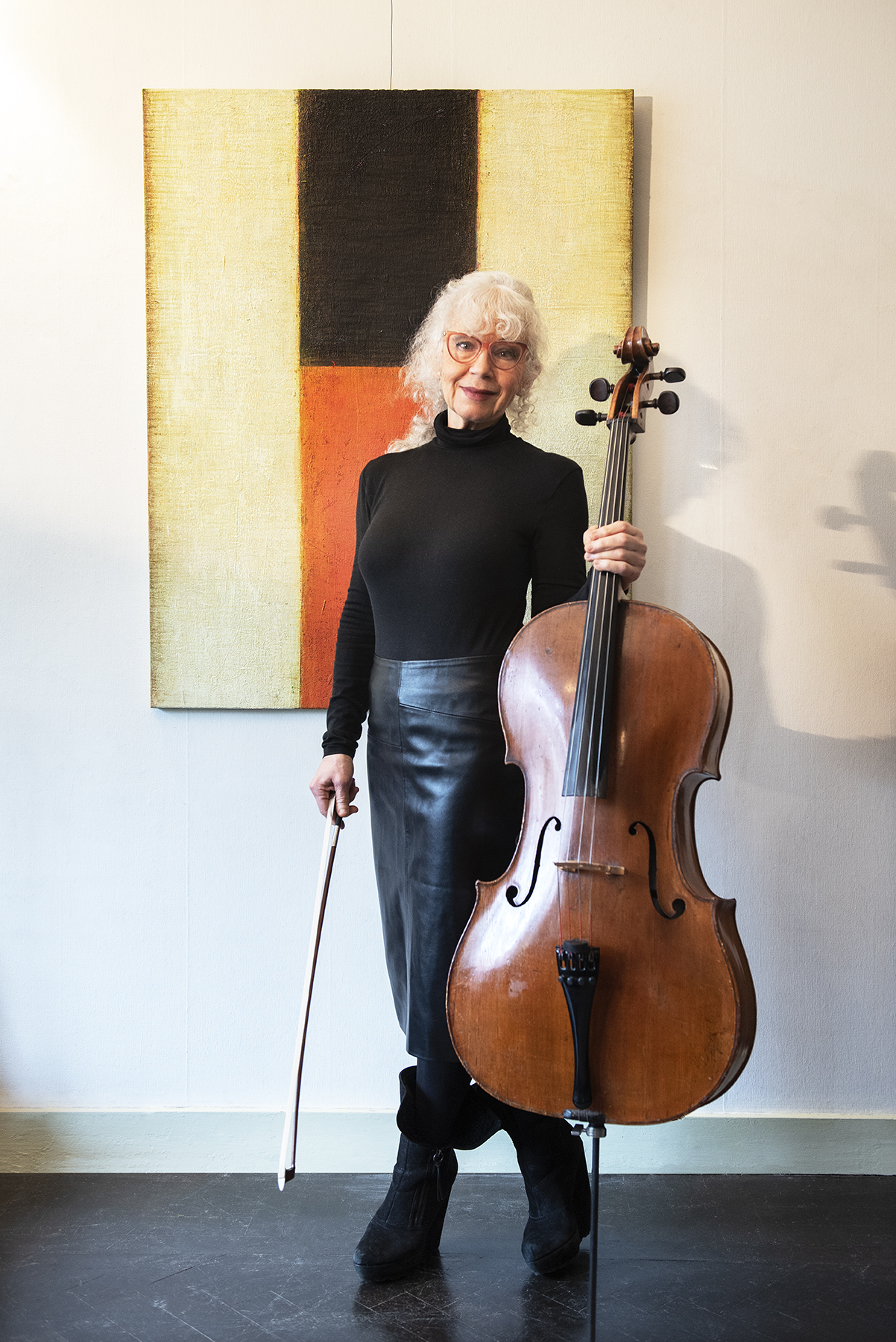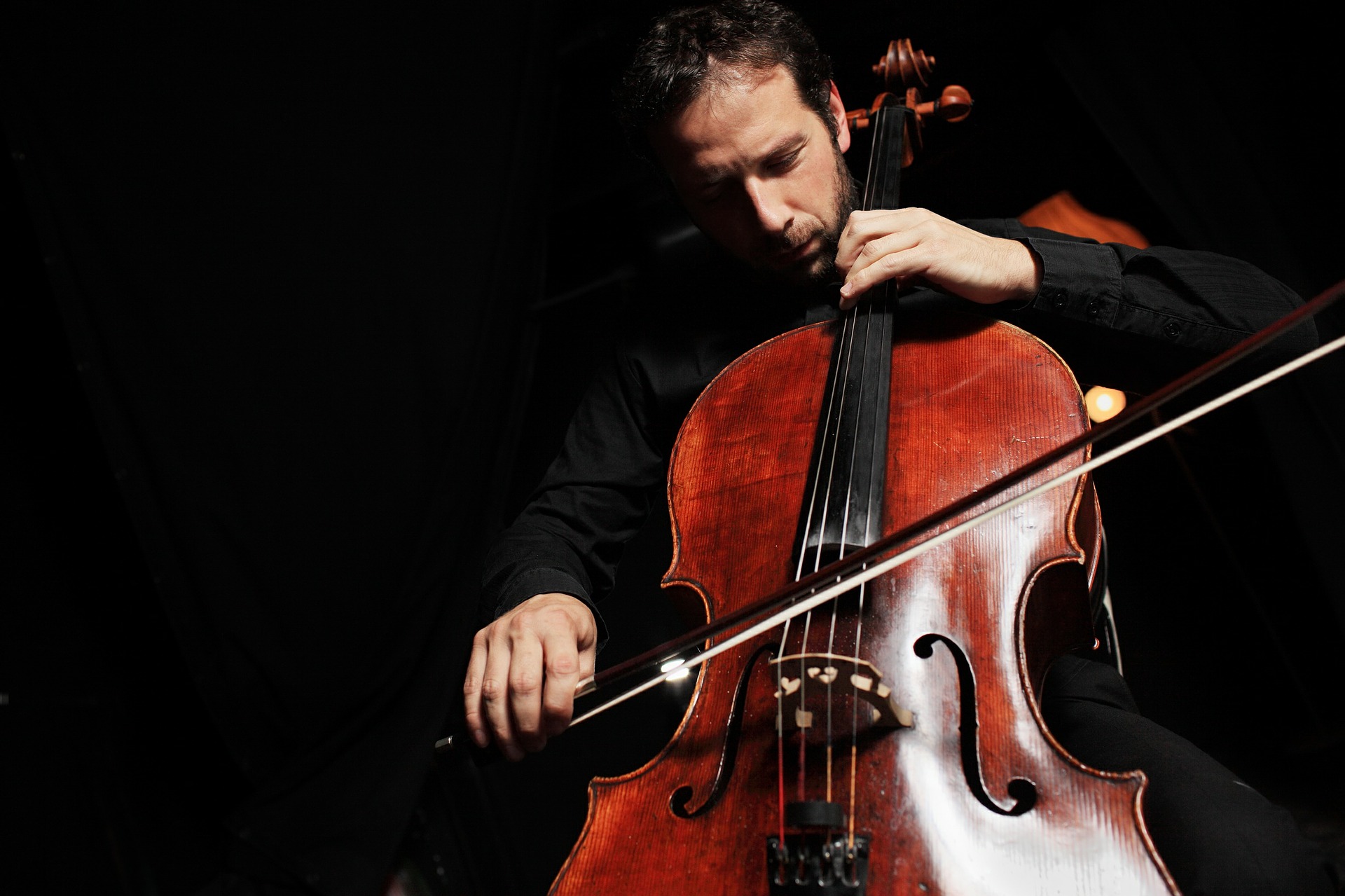Feldenkrais and playing freely on the cello
by Nadia David

I am Nadia David, cellist, teacher, musiMentor at IClassical Academy.
I have been searching and writing about the One Movement idea for a long time.
The urge to merge the complex web of thoughts, emotions and movements, our language on an instrument, into the most expressive sound and the least possible strain when playing, has been the drive motivating this never-ending search.
The wish to transmit to students the acquired knowledge in the most direct and compact way.
From my own experience, practicing and on stage, from my best teachers, the students, I have gathered much information that I was always trying to simplify in order to be able to explain it better.
Awareness through Movement
As it happens, sometimes there is a moment that makes it all come together.
Listening to Carlos Kleiber conducting the Mozart 36 symphony was for me such a moment. In his gestures he is drawing such floating lines in space that inspire the orchestra to play long breathing phrases, the movements are simple, no artificial choreography, and have a lightness that makes it not only a great performance but one of the rare moments when the material transcends, becomes the true essence of music.
My permanent question of how much movement and effort we need when playing, how can we simplify to reach the core of expression, started to be shaped into the concept of One Movement.
The idea got its roots in the study of the Feldenkrais' Awareness through Movement' that I have completed.
"Make the impossible possible, make the possible easy and make the easy elegant."
― Moshé Feldenkrais
or in Heifetz' words
"Practice like it means everything in the world to you.
Perform like you don't give a damn."
How we practice

We tend to practice already including the drive of performing for an audience. When we are so eager, doing our best, the whole system is forcefully working. Physical, mental, emotional action translate into muscles tension and the breathing will mirror the effort.
The unity of mind and body is a reality, their balance a necessity.
This brings us inevitably to the reality of breathing, of following the breathing cycle by becoming aware especially of its releasing moment, the breathing out when the body is in its deepest resting point.
The breathing cycle is what I use as a basic idea in the One Movement, by bringing attention to the moment of tension release, then breathing out.
We need just for a moment to think of it, it is always there, a moment of rest, just being, without Must. It is there also when we play difficult pieces or when we feel the mounting adrenaline before a concert or a lesson.
Trying to find links between all the elements in action,
- learning the notes
- coordinating the hands
- reaching the moment of controlled freedom
I bring them together into this moment of feeling the bodyweight when we breathe out. I found out that this way we can connect our movements, give them more ease and fluency.
That we can observe how continuous and light they become if we use it as a starting point, similar to the effect of jumping on a trampoline.
The touch down propels us in the air but always calls us down again.
Let's have a look at the Video example below
Discover comfort in playing
The way we think becomes the way we play.
A flexible brain is what produces a flexible body.
Thinking difficult, we will be straining muscles to render musical content, to please teachers and audiences. It will prevent us from discovering that sound resonance and freedom are a mirror of how we feel, that is how the instrument that is our body feels.
Thinking easy we do by learning to become aware that if we stay down in our weight, we find a continuous line of movement and of breathing that organically connects all parts of the ingeniously built body and its leading Mind.
Video Example Horizontal and Vertical sound
The Energy Refill Moment
Repetition, practicing many times difficult moments in a phrase or full musical phrases, during many hours a day, will most certainly bring great results.
Full concentration needs to be constantly nourished by a clear mind and a body that is able to release tension even during the most intense action.
I am relating the moment of Breathing Out to our movements, as the reload moment, that enhances continuity.
We don’t need to pay attention to every breath!
We just need to think of it and feel it from time, to remember It is always there.
This moment of air release is a vacuum cleaner for tension, it clears the mind and produces a good feeling.
It awakens our understanding and feeling of what we are really doing.
We become aware of how much movement or effort we need in order to perform all the actions on the strings
- shifts
- extensions
- vibrato
- bowing
and learn that with less effort we reach more and feel better. We learn to work in a more sensitively analytical way when practicing, growing towards the stage performance.
The technical elements are building stones of the musical construction, our minds and body reunited are the architect and the builder.
Video example Breathing in Fortissimo
My Course "Deeper sound and less effort in Cello Playing"
WHAT YOU GET IN THE COURSE:
- An Introduction explaining the relation between playing and the Feld way of thinking
- 5 Awareness exercises exemplified with a student
- The exercises are :
- creating a moment of rest
- time, that we always feel we have too little
- feeling relaxed
- learning to notice the body and how you can get in touch with all its parts only by thinking about it
- After a week of practicing them, thinking about the exercises only -will be enough. It will bring back the felt sensations
- Applying the exercises in playing will release muscle tension when playing
- The effort will diminish
- The mind learns to observe differences and make choices, sensitive and analytical develop.
- Control will increase in an unstrained way when forming
- Sound
- Shifts
- Extensions
- Vibrato
- Bowing
- Practicing this way we realize this is a permanent search.
- During concerts or playing for a teacher, we are able to find more confidence, control and enjoyment.
To summarize the content:
- Fundamentals and general Information
- Feldenkrais standing exercise
- Feldenkrais sitting exercise
- Feldenkrais rolling pelvis and arms lifting
- Applying Feldenkrais in practising the Cello
- Synopsis
6 videos, for a total running time of 53'
